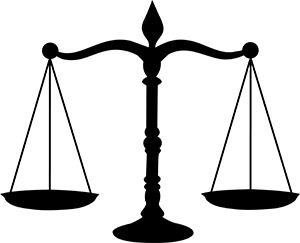How New Courtroom Technology Will Affect Personal Injury Cases of the Future
Gabriel A. Quevedo-Acero
The impact of courtroom technology on personal injury cases is a topic of interest. One
noteworthy advancement is the use of AI-generated accident simulations where video footage is
lacking. This article delves into how such innovations could influence injury litigation and
examines the acceptance of AI-simulated accident reconstructions as evidence.
Advancements in courtroom technology have progressed from visual aids to sophisticated tools
like electronic document management, real time transcription services, and virtual reality
simulations. These tools aim to streamline proceedings, enhance the presentation of evidence
and uphold justice.
In Conclusion, the adoption of AI-driven accident reconstructions in injury lawsuits has the
potential to transform how evidence is presented in courtrooms. While these technologies can
enhance comprehension of incidents their acceptance as evidence hinges on meeting established
criteria and addressing concerns about precision, bias, and transparency. By ensuring that AIgenerated recreations are scientifically robust and subject, to examination courts can leverage
technology benefits while safeguarding fairness and integrity within the judicial system.
AI-generated accident recreations produced through algorithms and data analysis offer
visual representations based on available information witness accounts and expert insights. Such
reconstructions could provide an understanding of the incident for jurors and judges by illustrating
the sequence of events and dynamics involved in the accident. Nevertheless, there remains
debate regarding the admissibility of these AI-generated recreations as evidence, in courtrooms.
The main legal issues revolve around the accuracy, impartiality, and potential biases
present in AI-generated content. A study featured in the Journal of Forensic Sciences highlights
how AI and VR technologies can aid in interpreting evidence with the reliability of reconstructions
heavily reliant on the quality of input data and algorithms used (Zhang et al.).
In terms of standards and precedents for AI-generated reconstructions to be deemed
admissible, they must adhere to evidence admissibility criteria concerning relevance,
dependability, and fairness. The Daubert standard as set forth by the U.S. Supreme Court in
Daubert v. Merrell Dow Pharmaceuticals Inc. mandates that scientific evidence must be grounded
in reasoning and methodology (Daubert v. Merrell Dow Pharmaceuticals, Inc.). This standard could
be leveraged to evaluate the admissibility of AI reconstructions by ensuring that the technology
employed is scientifically robust and yields outcomes.
Moreover, through its ruling, in Kumho Tire Co. V. Carmichael the Supreme Court expanded
the scope of the Daubert standard to encompass expertise and specialized knowledge. A category
under which AI-generated evidence could fall (Kumho Tire Co. V. Carmichael). This legal precedent
implies that courts may consider admitting AI reconstructions if they are crafted by experts using
established methodologies
When it comes to AI-powered recreations there are both advantages and hurdles to
navigate. One significant issue is the risk of bias, in AI algorithms. This bias can stem from origins,
such as the data used for training the algorithms and the subjective viewpoints of those overseeing
them. As noted in a Thomson Reuters report addressing bias in AI is crucial for ensuring outcomes
in matters.
Another obstacle lies in guaranteeing transparency throughout the development and validation of
AI recreations. Courts and opposing parties must have access to the underlying data and
methodologies to assess the accuracy and impartiality of these recreations. This openness is key to
upholding the integrity of processes and maintaining trust among all parties.
In Conclusion, the adoption of AI-driven accident reconstructions in injury lawsuits has the
potential to transform how evidence is presented in courtrooms. While these technologies can
enhance comprehension of incidents their acceptance as evidence hinges on meeting established
criteria and addressing concerns about precision, bias, and transparency. By ensuring that AIgenerated recreations are scientifically robust and subject, to examination courts can leverage
technology benefits while safeguarding fairness and integrity within the judicial system.
Works Cited
Daubert v. Merrell Dow Pharmaceuticals, Inc., 509 U.S. 579 (1993)
Kumho Tire Co. v. Carmichael, 526 U.S. 137 (1999).
Thomson Reuters. “How AI Transformed the Legal Profession in 2023.” Thomson
Reuters, 2023, https://legal.thomsonreuters.com/blog/how-ai-transformed-the-legal-profession-in-2023/.
Zhang, L., et al. “Application of Artificial Intelligence in Forensic Science.” Journal of
Forensic Sciences, vol. 66, no. 5, 2021, pp. 1924-1935, pubmed.ncbi.nlm.nih.gov/34493128/.
